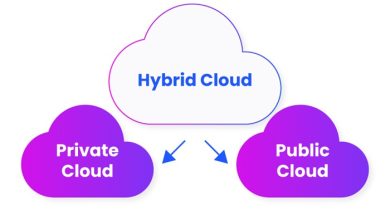
Ransomware may sound like a rare occurrence only found in elaborate action movie plots, though it remains a real-world threat that is actually quite common. In fact, 69% of businesses happened to encounter a “successful ransomware incident” over the previous year (in 2023), a 2024 Proofpoint report titled “State of the Phish” unveiled. For victims, a ransomware attack can be particularly disastrous, bringing to light a ripple-like effect with potential damage that extends from reputational and financial harm to operational disruption. Compromised data is another serious concern, with many attacks resulting in public leaks or even destruction of valuable data. While cybersecurity efforts can help protect organizations in key ways, it’s crucial to consider the technological advancements that make ransomware such a serious threat in 2025.
The basic elements of ransomware
By definition, ransomware is a form of malware — after infection, it takes hold of files and data (and often systems and device access as well), effectively making them inaccessible until a payment is made (called a ransom payment). Many organizations may wonder, how does ransomware encrypt files in a way that results in total disruption? The answer is often straightforward; ransomware can find its way from cybercriminals and into an organization via simple channels such as phishing emails or even a malicious website, though other avenues can include compromised software — to highlight just a few.
From there, encryption is used to lock specific files before a ransom is demanded. After what is often a hefty payment in cryptocurrency, the ransomware typically promises to deliver a decryption key. In regard to the payment itself, it’s generally not a small sum — Digital Guardian notes that the ransom payment demanded has increased over time, with the average payment in Q3 of 2022 amounting to $233,817. The Digital Guardian blog post further goes on to point out that not all attacks are about the money, as some cybercriminal groups seek out to destroy data instead of holding it hostage.
Technology is driving major changes
According to TechTarget, ‘old-school’ ransomware used to rely on just encryption in order to render a victim’s data inaccessible, though ransomware has since evolved to become more complex with elements like cyber extortion. This includes approaches like blackmail, or the threat of making an organization’s data public, the article explains — such threats are meant to further persuade victims into paying the ransom. The growing prevalence of artificial intelligence (AI), on the other hand, has brought to light a whole new world of possibilities for cybercriminals.
An Arizona State University (ASU) news article by Marshall Terrill further explores the role that technological advancements like AI can have in regard to cyberattacks. Focusing on an interview with Victor Benjamin, an assistant professor of information systems at ASU explains why AI is a growing concern due to its ability to produce higher quality content. For example, Benjamin points out that while traditional phishing attacks are typically limited, AI is able to “create highly authentic, diverse and personalized phishing content at scale.” This makes such attacks more of a challenge to identify.
Due to the fact that ransomware can originate from an attack approach like a phishing email, this can easily leave organizations more on edge for the future of the technology. However, it’s not just the origins of a malware attack that are cause for concern, as AI has the potential to streamline the entire ransomware process. A NordPass blog post further dives into the implications that AI can have when it comes to ransomware attacks, noting that the tech can inject automation into the attack process. This can lead to a cyberattack experience that is quicker and more efficient, from determining weakness in IT systems to rapidly encrypting sensitive files.
The value in multiple precautions
Ransomware is an intimidating threat for any individual or business, though there are ways to stay protected. One Forbes article by Harry Kazakian for Forbes Business Council outlines the value of basic cybersecurity measures (such as a strong firewall, ample antivirus protection, and solid passwords). In addition to an avenue for backing up data, it’s advised that small businesses invest in anti-malware tools and monitoring applications. “Low-cost subscriptions can offer robust features like centralized management dashboards, advanced reporting and dedicated support,” Kazakian writes.
AI-specific training can be particularly beneficial when the goal is to prevent AI-driven cyberattacks, and can help a team stay up to date on new developments and protection methods. Alongside a team’s awareness as to how ransomware works (and the basics of cybersecurity), a combination of physical efforts can work in tandem to provide more robust security efforts. This includes efforts like spam filters, backing up data to the cloud, and the right software — not to mention routine cybersecurity audits in order to provide an onion-like, stratified approach to cybersecurity protection.
Ransomware is an intimidating form of malware that can wreak havoc on an organization in more ways than one. By staying up to date on how ransomware continues to evolve, organizations can develop robust cybersecurity measures that protect the organization in several critical ways.




